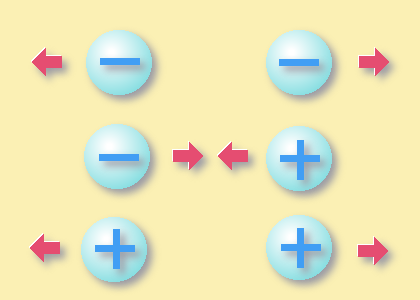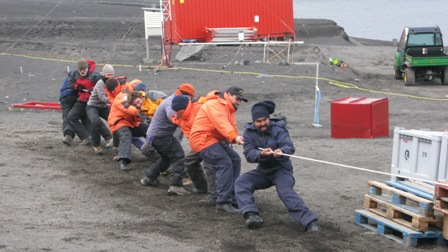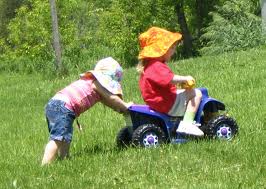Here you have a lot of activities to practice what we studied last school year.
Tuesday, September 18, 2012
ROME
The Romans lived in cities. They lived in houses.
They wore tunics and sandals.
The Emperor was a very important person.
The language of Ancient Rome was latin. The children went to school to study writing and maths.
They made many buildings: temples, bridges and theatres.
There were many different Roman gods.
They wore tunics and sandals.
The Emperor was a very important person.
The language of Ancient Rome was latin. The children went to school to study writing and maths.
They made many buildings: temples, bridges and theatres.
There were many different Roman gods.
EGYPT
The ancient Egyptians lived next to the river Nile, in Egypt.
The pharaoh was a very important person.
They cultivated cereals and looked after animals.
When people died, they were mummified.
They made pyramids.
There were many different Egyptian gods.
They used hieroglyphs to record information.
The pharaoh was a very important person.
They cultivated cereals and looked after animals.
When people died, they were mummified.
They made pyramids.
There were many different Egyptian gods.
They used hieroglyphs to record information.
PREHISTORY
Primitive man lived in caves. Their clothes were made of animal skins.
They used tools made of stone and wood.
They were hunters.
They discovered fire.
They painted caves with pictures of animals.
Later, they cultivated the land and looked after animals. They lived in huts.
They used tools made of stone and wood.
They were hunters.
They discovered fire.
They painted caves with pictures of animals.
Later, they cultivated the land and looked after animals. They lived in huts.
ROAD SIGNS
RESPECT THE RULES.
Road signs are very important and we must respect traffic rules. Road signs have different shapes and colours to help us identify the rules:
 |
| Danger |
 |
| Prohibition |
 |
| Indication |
 |
| Obligation |
MEANS OF COMMUNICATION
We can comunicate using different means of communication. We can use a telephone to talk, a radio to listen to a football match, a newspaper to read the news and email to write to our friends.
 |
| Radio |
 |
| Telephone |
 |
| Newspaper |
 |
| Computer |
MEANS OF TRANSPORT
We can use transport to move people, animals and other objects from one place to another. We can travel by land, air and sea.
 |
| A helicopter travels by air. |
 |
| A bicycle travels by land. |
 |
| A boat travels by sea. |
PETROLEUM
Petroleum is an important source of energy. It is underground and we use special machines to bring it to the surface.
We can obtain a lot of different products from petroleum.
 Petrol. |
| Plastic. |
 |
| Butane gas. |
Monday, September 17, 2012
MAGNETS
A magnet is made of magnetic material, for example, iron.
A magnet uses force to move some metal objects without touching them.
Magnets have two parts called poles; a north pole and a south pole.
A north and a south pole attract.
Two north poles or two south poles repel.
PULL AND PUSH
We use force to move objects.
We can pull objects towards us.
PULL
We can push objects away from us.
PUSH
JOBS
Here you have the jobs we have been learning:


Firefighter: She/He puts out fires.
Cook (chef): She/He cooks food.
Dentist: She/He looks after our teeth.
Plumber: She/He repairs pipes.
Farmer: She/He looks after animals and plants.
Hairdresser: She/He cuts or combs our hair.
Mechanic: She/He repairs cars.
Doctor: She/He looks after our health.
Nurse: She/He takes care of us (patients).
Waitress/Waiter: She/He serves us drinks and food.
Policewoman/Policeman: She/He protects us.
Shop assistant: She/He sells us things.
Street cleaner: She/He cleans the streets.
Teacher: She/He teaches children new things.
Vet: She/He is a doctor for animals.
Housewife: She/He looks after the house.
House cleaner: She/He cleans other people’s houses.
Postwoman/Postman: She/He delivers letters.
Taxi driver: She/He drives us places.
Bus driver: She/He drives us places.
Truck driver: She/He drives things to places.
Pilot: She/He flies planes.
Football player: She/He plays football.
Singer: She/He sings.
Cumputer programmer: She/He works with computers.
Builder: She/He builds houses.
Carpenter: She/He makes wood furniture.
Astronaut: She/He flies to space.
Miner: She/He searches minerals.
Fisherman: She/He catches fish.
Clown: She/He makes children laugh.
DIFFERENT LANDSCAPES
MOUNTAINOUS LANDSCAPE:
What can you see in a mountainous landscape?
Mountain, peak, slopes, mountain range, valley, river.
There are no high mountains on plains. The land is flat. You can see fields and straight roads. There are villages and rivers.
COASTAL LANDSCAPES:
What can you find in a coastal landscape?
What can you see in a mountainous landscape?
Mountain, peak, slopes, mountain range, valley, river.
 |
| Mountain by Tarun Chopra, Slopes by Walter Baxter, Mountain Range by C Frank Starmer, River in Firehole, Valley by Nac Datta |
PLAINS AND FLAT LANDSCAPES:
COASTAL LANDSCAPES:
What can you find in a coastal landscape?
DECIDIOUS AND EVERGREEN TREES
Decidious trees lose their leaves in Autumn: the leaves change colour and fall to the ground. The leaves grow again in spring.
EVERGREEN TREES
Evergreen trees do not lose their leaves in Autumn. They are green all year.
EVERGREEN TREES
Evergreen trees do not lose their leaves in Autumn. They are green all year.
 | ||||
| Decidious tree. Flickr |
 |
| Decidious tree, by Isamoli. Flickr. |
 |
| Decidious and evergreen trees. |
 |
| Evergreen trees, by Julian P Guffogg. |
LIFE CYCLE OF A PLANT
1.- Plants are born from seeds.
2.- Plants grow.
3.- Plants reproduce.
4.- Plants die.
2.- Plants grow.
3.- Plants reproduce.
4.- Plants die.
 |
| 1.- Plants are born from seeds. 2.- Plants grow. |
 |
| 3.- Plants reproduce. |
 |
| 4.- Plants die. |
INVERTEBRATES
Invertebrate animals do not have a skeleton. Some protect their bodies with a shell. There are a lot of different types of invertebrates. They live in water and on land.
Jellyfish are transparent and live in the sea.
Worms are long and soft.
Spiders have eight legs.
Snails have a shell to protect them.
Bees have six legs and wings.
Jellyfish are transparent and live in the sea.
Worms are long and soft.
Spiders have eight legs.
Snails have a shell to protect them.
Bees have six legs and wings.
BIRDS
Birds are vertebrates. They are oviparous animals. They have a beak, feathers, two feet and two wings. Birds can be carnivores, herbivores or omnivores. There are wild birds and domestic birds.
And here you have a video about birds. Enjoy it!
WHAT DO ANIMALS EAT?
Carnivores eat meat. Lions are carnivores.
Herbivores eat plants. Elephants are herbivores.
Omnivores eat meat and plants. Pigs are omnivores.
Herbivores eat plants. Elephants are herbivores.
Omnivores eat meat and plants. Pigs are omnivores.
 |
| Imágenes del Banco de Recursos del ITE (cerdo Jorge Martínez Huelves) Sonidos: león - ITE, elefante - Venus Maritza. |
Labels:
CARNIVORES,
HERBIVORES,
OMNIVORES,
SCIENCE 2º REVIEW
HOW DO ANIMALS REPRODUCE?
VERTEBRATES
Vertebrate animals have a skeleton and a backbone. There are five types of vertebrates: mammals, birds, reptiles, amphibians and fish.
Click here if you want to do a crossword about the five types of vertebrates.


Lets play!
Click here if you want to do a crossword about the five types of vertebrates.


Lets play!
THE THREE FORMS OF WATER
Water has no colour, it does not smell and it does not taste of anything.
Liquid water can change form. We can cool water and make ice; ice is solid water.
When we heat water and it produces water vapour; vapour is water in the form of gas.
Play:
Liquid water can change form. We can cool water and make ice; ice is solid water.
When we heat water and it produces water vapour; vapour is water in the form of gas.
 |
| Imágenes del Banco de Imágenes y Sonidos del ITE: Jarra (Clarissa Rodrigues González), y Cubitos |
Play:
THE WATER CYCLE
1.- The Sun heats the water in the sea. The water evaporates and forms clouds.
2.- The wind moves the clouds. The clouds cool and then it rains or snows.
3.- The water falls into lakes and rivers.
4.- The water from the lakes and rivers goes to the sea. The cycle starts again.
Play:
2.- The wind moves the clouds. The clouds cool and then it rains or snows.
3.- The water falls into lakes and rivers.
4.- The water from the lakes and rivers goes to the sea. The cycle starts again.
 |
| Imagen obtenida del Banco de Imágenes y Sonidos del ITE |
Play:
THE MOON PHASES
The Moon is a satellite. It moves around the Earth.
Look at the pictures of the Moon. The dark areas we can see are
mountains and craters.
The Moon does not produce light. It reflects the light from the Sun.
The Moon has four phases: full moon, first quarter moon, new moon and third quarter moon.
Play:
Look at the pictures of the Moon. The dark areas we can see are
mountains and craters.
The Moon does not produce light. It reflects the light from the Sun.
The Moon has four phases: full moon, first quarter moon, new moon and third quarter moon.
Play:
CARDINAL POINTS
Cardinal points help us orient ourselves.
The cardinal points are north, south, east and west.
The Sun rises in the east and sets in the west.
We can use a compass to orient ourselves or we can use the Pole Star.
Play:
The cardinal points are north, south, east and west.
The Sun rises in the east and sets in the west.
We can use a compass to orient ourselves or we can use the Pole Star.
Play:
THE UNIVERSE
There are a lot of celestial bodies in the universe: stars, planets and satellites.
Stars are big balls of gas. They produce light and heat.
Planets are celestial bodies. They rotate around a star.
Satellites are celestial bodies. They rotate around a planet.
Play and check:
Labels:
CONSTELLATIONS,
SATELLITES,
SCIENCE 2º REVIEW,
STARS
Subscribe to:
Posts (Atom)























